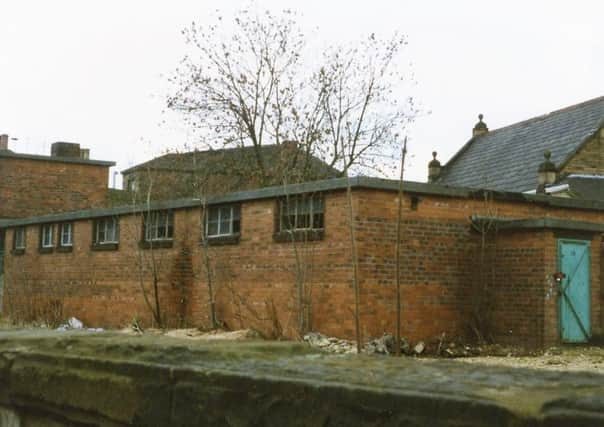Why rare gas decontamination centre in Yorkshire town is reminder of war effort on Home Front


empty today, a red-brick building that was constructed to treat casualties in the event of gas attacks during the Second World War gives little clue to its fascinating past from the outside.
It is a rare surviving example of a wartime civilian gas decontamination centre, and, with the help of local historian Christine Cudworth, the property, in Horbury, West Yorkshire, has been granted listed building status.
Advertisement
Hide AdAdvertisement
Hide AdAccording to Historic England, it is one of the best preserved purpose-built centres of its kind in the country and provides a tangible reminder not only of the threat of chemical warfare and the dangers faced by British civilians during the conflict, but also of the war effort on the Home Front.
“Having lived in Horbury since 1958, I have been aware of the decontamination unit for a long time,” says Christine. “But I only found out what it actually was in the 1990s, when I started interviewing people about their experiences during the Second World War and recording their memories.”
It was actually for the nearby Old Town Hall, now used as a business complex, and Carnegie Library that Christine says she applied for listed building status, on behalf of Horbury Heritage Trust, where she is secretary and trustee.
“The decontamination unit was added to the application after the site had been inspected by Historic England,” she claims.
Advertisement
Hide AdAdvertisement
Hide AdThe decontamination unit, which Christine believes is one of only a handful left in the country from the Second World War, was the only one of the buildings to be listed, given a Grade II status, meaning that it is of special interest.
“I think some older members of the community know about it but most of the general public probably don’t,” she says. “Following the interest in the unit, I researched further,” she adds. “It was built in 1939, prior to the outbreak of the Second World War, as it was widely thought that the Germans would use gas.”
The use of gas in war had been prohibited under the Geneva Gas Protocol of 1925, which both Britain and Germany signed. But, says the Historic England listing, the British Government, aware that agreements could sometimes be broken during hostilities, developed gas weapons and ways to protect against their use.
“My research shows that the fear of gas was treated with great urgency by the Government,” says Christine. “Gas had been used by the Germans in the First World War and it was feared they would use it again.”
Advertisement
Hide AdAdvertisement
Hide AdGas decontamination centres, also known as cleansing stations, were built in both civilian and military areas to provide reassurance and protection in the event of a gas attack.
Regulated by Air Raid Precaution Wardens and civil police, they provided an area where casualties could be decontaminated and receive first aid treatment.
In Horbury, the unit, which has previously been used for storage but is now empty, would likely have had an undressing area, shower and eye douche area, drying space and dressing room with benches and clothes lockers.
According to Christine, civilian volunteer organisation the Civil Defence Service were given use of the decontamination unit in 1941 and remained there until disbanding in 1945. “Fortunately it never had to be used for its intended purposes,” she says. The nearby town hall appears to have served as an Air Raid Precaution Centre, with a control room to alert various organisations to danger and an external warning bell.
Advertisement
Hide AdAdvertisement
Hide AdWhilst Christine is disappointed the hall and library have not been listed, both she and members of Horbury Heritage Trust are “surprised and delighted” that their corner of West Yorkshire is home to a Second World War centre of national importance.